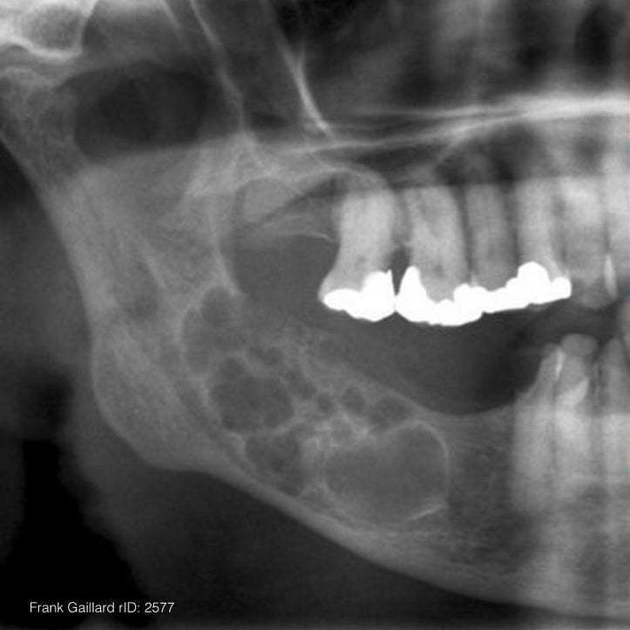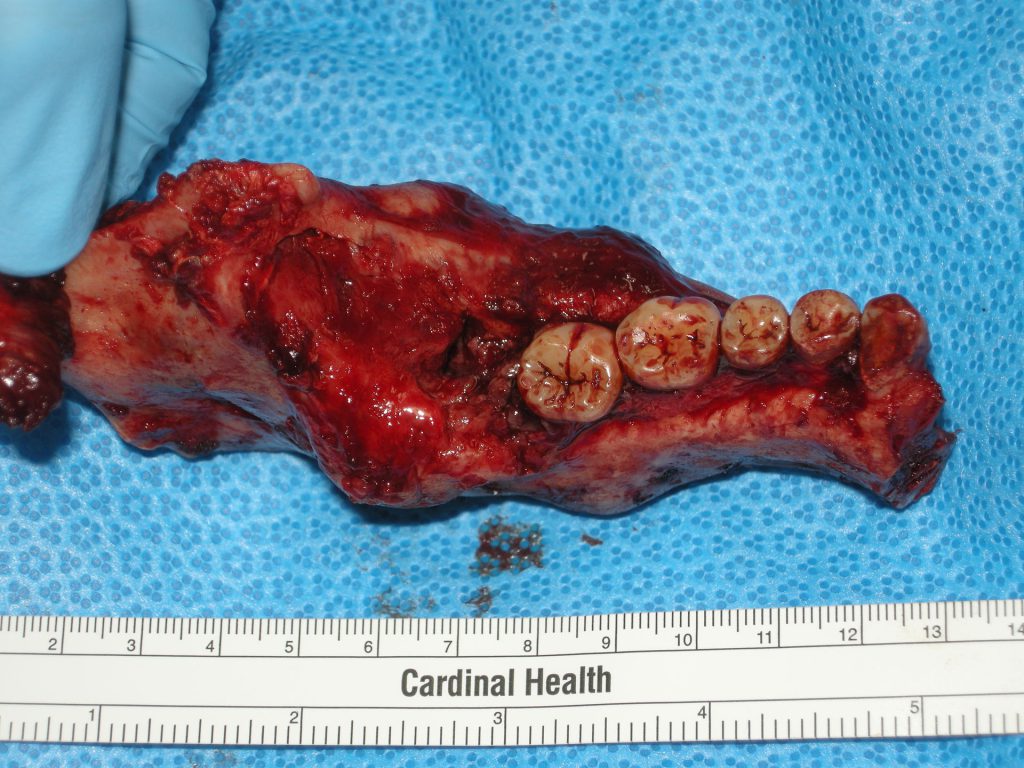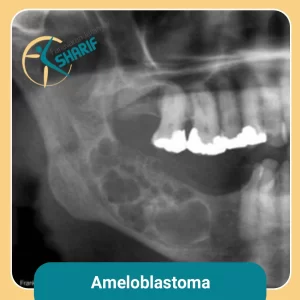Ameloblastoma is a rare benign cancerous tumor that usually develops in the lower jaw. It is a tumor of odontogenic epithelium (cells that form the protective enamel lining on your teeth). They are the second most common odontogenic tumor, however represent only about 1% of all jaw tumors [1]. The most common type of Ameloblastoma is an aggressive large tumor that grows into the jaw bone.
Treatment usually includes surgery to resect the tumor and may also require radiation. In some cases it may be necessary to perform reconstructive surgeries to restore the teeth, jaw, or facial shape of the patient [2].

Symptoms
Ameloblastoma often causes no symptoms, but signs and symptoms may include pain and a lump or swelling in the jaw.
If left untreated, the tumor can grow very large, distorting the shape of the lower face and jaw and shifting teeth out of position.
Causes
Ameloblastoma begins in the cells that form the protective enamel lining on your teeth. Rarely, it may start in gum tissue. The exact cause of the tumor is unclear, but several genetic changes (mutations) may be involved in the development of ameloblastoma. These changes may impact the location of the tumor, the type of cells involved and how fast the tumor grows.
Ameloblastomas are generally classified by type, but they can also be classified by cell type. The four main types include:
- Conventional ameloblastoma. This is the most common type and grows aggressively, usually in the lower jawbone, and approximately 10% recur after treatment.
- Unicystic ameloblastoma. This type is less aggressive, but typically occurs at a younger age. The tumor is often in the back of the lower jawbone at the molars. Recurrence is possible after treatment.
- Peripheral ameloblastoma. This type is rare and affects the gums and oral tissue in the upper or lower jaw. The tumor has a low risk of recurrence after treatment.
- Metastasizing ameloblastoma. This type is very rare and is defined by tumor cells that occur away from the primary site in the jaw.
Complications
Rarely, ameloblastoma can become cancerous (malignant). Very rarely, ameloblastoma cells can spread to other areas of the body (metastasize), such as the lymph nodes in the neck and lungs.
Treatment
Providers treat this condition by surgically removing your tumor and some nearby tissue. There are different surgical approaches. Your provider considers the following factors when recommending a specific surgery:
- Whether the type of tumor you have is likely to spread.
- Whether your tumor is likely to come back after surgery.
- Your overall health.
- How different surgeries may affect your quality of life.
Healthcare providers often classify tumor surgeries as being conservative or radical. In conservative surgery, your provider may remove your tumor and a small amount of healthy tissue and bone. In radical surgery, your provider may remove a larger amount of healthy tissue and bone to reduce the chance your tumor may come back. People who have radical surgery to remove their ameloblastomas typically have reconstructive surgery to replace the healthy tissue and bone and reduce any physical differences surgery may cause.

References
- Palanisamy JC, Jenzer AC. Ameloblastoma. [Updated 2022 Jul 4]. In: StatPearls [Internet]. Treasure Island (FL): StatPearls Publishing; 2022 Jan-. Available from: https://www.ncbi.nlm.nih.gov/books/NBK545165/
- Ameloblastoma, [Updated 2021 Nov 17]
Available from: https://www.mayoclinic.org/diseases-conditions/ameloblastoma/symptoms-causes/syc-20351278#:~:text=Overview,and%20growing%20into%20the%20jawbone. - Ameloblastoma, [Updated 2022 Nov 30]
Available from: https://my.clevelandclinic.org/health/diseases/22143-ameloblastoma#management-and-treatment

